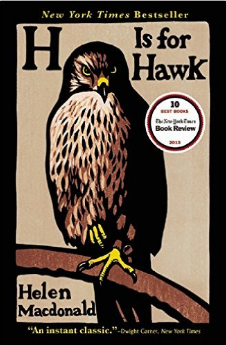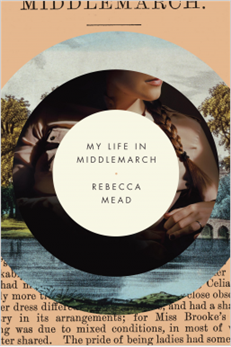 During the past year I read Margaret Forsters’ biography of Daphne du Maurier, and I find that Neverland makes a fascinating contrast with it. Piers Dudgeon traces the history of the du Maurier family and speculates how their relationships with J.M. Barrie, the author of Peter Pan, adversely affected them. Several members of the family were indeed disturbed, but the question is, how much, if anything, did that have to do with Barrie?
During the past year I read Margaret Forsters’ biography of Daphne du Maurier, and I find that Neverland makes a fascinating contrast with it. Piers Dudgeon traces the history of the du Maurier family and speculates how their relationships with J.M. Barrie, the author of Peter Pan, adversely affected them. Several members of the family were indeed disturbed, but the question is, how much, if anything, did that have to do with Barrie?
Dudgeon paints Barrie as a sociopath without exactly calling him one. Barrie grew up unloved by his hypochondriac mother, who took to her bed with the death at fourteen of her favorite son David. Barrie was six at the time and was never able to attract much of her attention, even resorting to dressing up as his brother and imitating him to try to get her to love him. This behavior is indeed bizarre, but Dudgeon makes the first leap by alleging that Barrie must have somehow caused his brother’s death to have been so neglected.
The early life of George du Maurier is not similarly examined (George being Daphne du Maurier’s grandfather); instead, Dudgeon zeroes in on du Maurier’s experiences as a young bohemian in Paris. Du Maurier is best known as the author of Trilby, a novel in which Svengali takes over the life of a young woman by means of hypnosis and eventually ruins her. This novel is based at least in part on the experiments of du Maurier and a group of friends during which they repeatedly hypnotized a young artist’s model. Du Maurier apparently regretted this episode in later life, although he did not give up “mesmerism,” and what he called “dreaming true” (self-hypnosis) until he married, and he later returned to his experiments.
Dudgeon uses this background to weave the theory that Barrie–who admired du Maurier’s first book, Peter Ibbetson, a story about a man who can escape the bounds of space and time by “dreaming true”–was somehow rejected by du Maurier and took his revenge by purposefully befriending and dominating members of du Maurier’s family, causing changes in their behavior. There is actually no proof that du Maurier and Barrie ever met, although Barrie certainly befriended Sylvia Llewellyn Davies, George’s daughter, and her children. It is also clear that he “stole” her children. Both Sylvia and her husband Arthur died when the boys were quite young, and Barrie copied the letter that Sylvia wrote during her last illness requesting the children’s nanny and her sister Jenny to take charge of the children, changing “Jenny” to “Jimmy,” and thereby co-opting the children. Oddly, none of the du Mauriers seems to have objected to that, to which Dudgeon ascribes more sinister goings-on. Of those boys, only one seemed not to be at all disturbed by their upbringing with Barrie.
Modern minds will think sexual abuse, of which there are indeed some indications, but Dudgeon thinks Satanism, if that’s not an exaggeration. And here we get to Peter Pan, who was not intended to be everyone’s picture of innocent, irresponsible boyhood, but who Barrie intended to be a villain, a Pan or “demon boy” figure, a pixie who stole other people’s children, who hated mothers, and who killed without compunction. Barrie was good at hiding the antisocial nature of his work behind saccharine sentiments, but this depiction is indeed what he intended, and Dudgeon of course sees Peter Pan as a self portrait of Barrie.
Dudgeon presents a great deal of information about the various fates of the Llewellyn Davies boys, but he spends his final chapters on Daphne du Maurier, their cousin. Margaret Forster’s view is that du Maurier’s tendencies toward homosexuality (borne out by some affairs and statements by du Maurier herself) and possible affair with her own father colored her life and affected her relationships with her husband and children–that and an appalling degree of selfishness. But Dudgeon doesn’t think she was homosexual at all. He believes that she and her father Gerald, a well-known actor who appeared in several Barrie plays, were so overshadowed by Barrie that her “demon boy” self came out in adolescence and dominated most of her life, until she suffered a breakdown in her 50’s.
I am not criticizing this book for lack of interest–it is indeed engrossing. But Dudgeon hangs a great deal too much of his tale on the assumption that most of Barrie’s and both the du Mauriers’ writings were autobiographical in some way. Even if they were, many of the quoted passages can be interpreted in more than one way. Barrie’s submersion of the children into a fantasy life certainly doesn’t seem to have been good for them, and as I said before, there is some indication in his own writings of the possibility of child sexual abuse, but I don’t know what else can be said with authority.
 Thomas Hardy has long been one of my favorite Victorian writers, so when I learned that Claire Tomalin had written his biography, I set about getting a copy. Tomalin has made a career of writing interesting and readable but meticulously documented biographies of mostly literary figures and has become one of my favorite biographers.
Thomas Hardy has long been one of my favorite Victorian writers, so when I learned that Claire Tomalin had written his biography, I set about getting a copy. Tomalin has made a career of writing interesting and readable but meticulously documented biographies of mostly literary figures and has become one of my favorite biographers.



 Before I start on my review of Véra, I just wanted to comment on the death of
Before I start on my review of Véra, I just wanted to comment on the death of 





